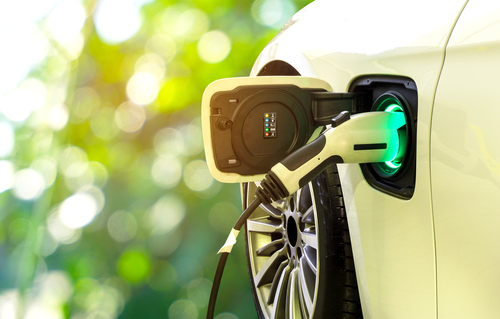The American Property Casualty Insurance Association (APCIA) has released a new paper that examines electric vehicle adoption and its impact for the insurance industry.

The paper, titled “Electric Vehicle Adoption and Impacts for the Insurance Industry,” presents an overview of EV technologies, insurance considerations, and potential challenges. It also includes a summary of recent policy and regulation driving EV adoption.
“Many of the risks associated with EVs are similar to those for conventional vehicles,” Ethan Aumann, senior director, environmental issues, and resiliency for APCIA, said. “However, EVs present some unique risk factors that can drive insurance costs higher, including higher upfront and repair costs, longer repair times, and increased vehicle weight due to the battery pack. There are also risks related to vehicle and charging station connectivity, such as data security and privacy concerns. The lack of consistency in EV design and battery standardization poses additional challenges for auto insurers. On the other hand, the vehicle’s and driver’s underlying risk characteristics ultimately drive the insurability and premium charged for auto policies. Additionally, there are also opportunities associated with EVs because of enhanced safety through the use of advanced vehicle features.”
According to a recent Pew Research Center survey, about 38 percent say they’re very or somewhat likely to seriously consider an electric vehicle (EV) for their next vehicle purchase. However, the report found that the high upfront cost of EVs is one barrier consumers face when considering the purchase of an EV. But the introduction of additional models in coming years and maturing supply chains are also expected to exert downward pressure on EV prices over time.
Also, among issues that could impact insurers, the report said that some EVs take longer to repair and are more expensive to repair than conventional vehicles. Further, EVs can deliver instantaneous high torque from a stop, resulting in much faster acceleration than many conventional vehicles. Depending on the several factors, this enhanced performance could either be a safety concern or benefit that allows a driver to avoid a collision. Further, the battery in an EV can account for as much as one-third of the total vehicle weight, and EVs are considerably heavier than conventional cars. Heavier vehicles can cause more damage.
Additionally, the risk of EV battery fires has direct implications for personal and commercial lines, including auto and property insurance and other types of insurance depending on where the fire occurs. And there are cybersecurity risks associated with data leaks or hacking. A potential risk of using public charging stations is their vulnerability to being hacked.
“The relatively recent adoption of EVs means there is limited use and loss data for insurers to consider when trying to understand, accurately predict, and price risk associated with increasing numbers of EVs,” Aumann said. “But as a greater number of EVs are on the road for a longer period, insurers will have additional historical data to more accurately assess risks associated with EVs.”